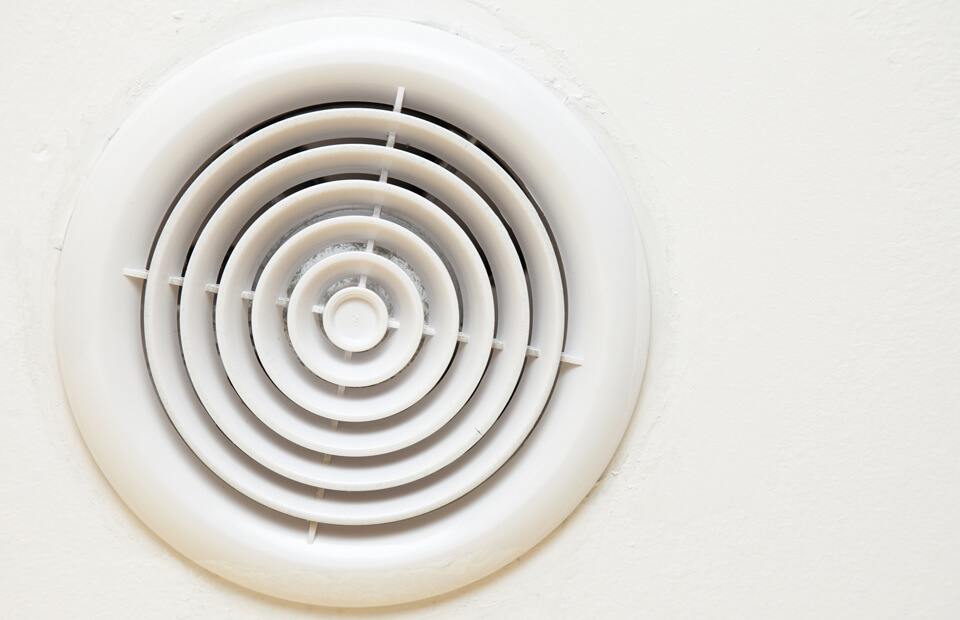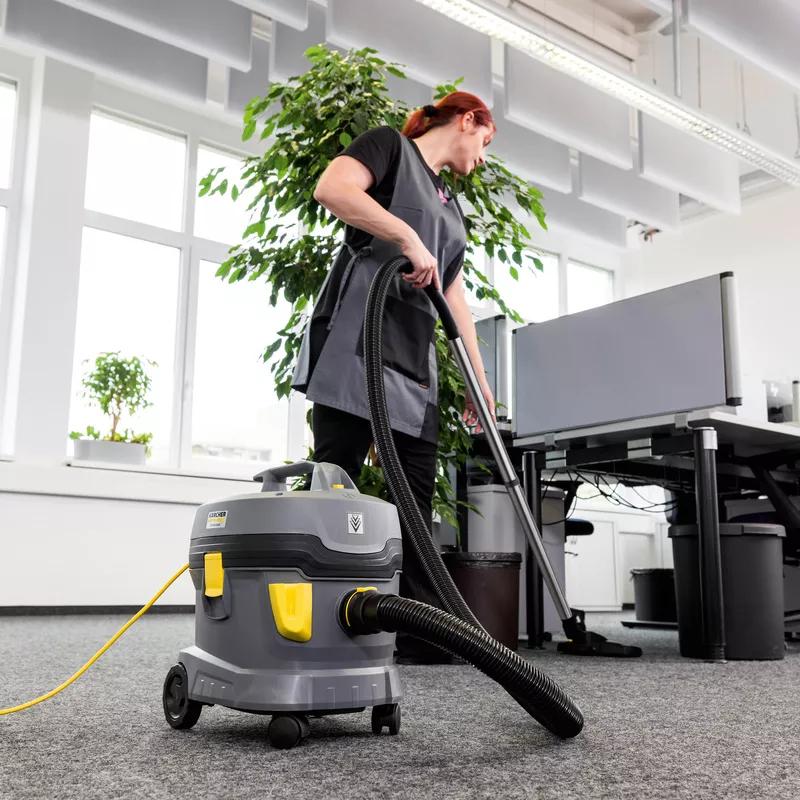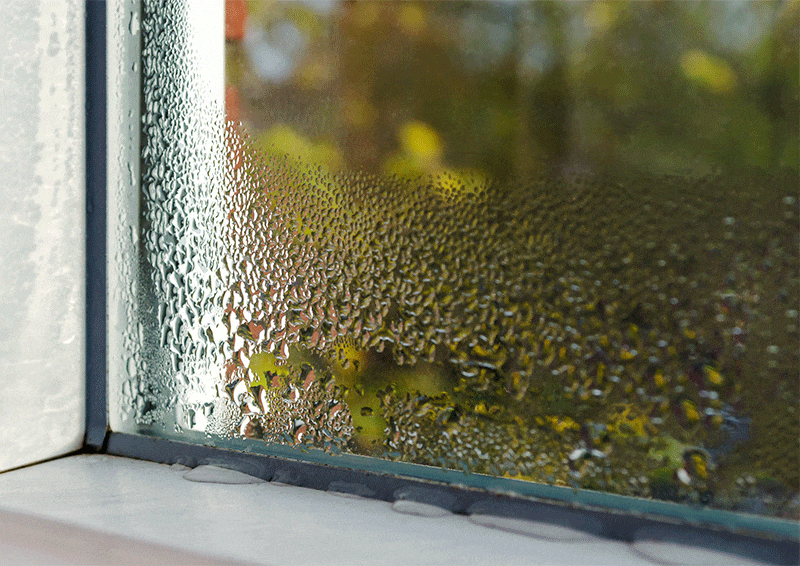Today, we’re shining a spotlight on a little-known phenomenon called “sick building syndrome.” You may have never heard of it before, but it’s time to pay attention because it could be affecting you more than you realize.
Sick building syndrome is a silent menace that can wreak havoc on your health without you even knowing it. From mysterious headaches and fatigue to respiratory problems and skin irritations, the symptoms of this syndrome are varied and widespread.
But what exactly is sick building syndrome, and how does it go unnoticed for so long? In this blog, we’ll explore the causes, symptoms, and preventative measures you can take to protect yourself from this insidious threat. So grab a cup of tea, settle in, and let’s dive into the world of sick building syndrome.
What is Sick Building Syndrome?
Sick Building Syndrome (SBS) is a term used to describe a condition where occupants of a building experience acute health and comfort effects that are linked to time spent in that particular building. These symptoms cannot be attributed to any specific illness or cause, but they often disappear or improve when individuals leave the building. SBS is a serious issue that can have a significant impact on occupant health and productivity, making it essential to address and mitigate its effects.
The importance of addressing SBS cannot be overstated. Buildings are where we spend the majority of our time, whether it’s workplaces, schools, or homes. Therefore, the quality of the indoor environment can have a significant impact on our overall health and well-being. When occupants experience symptoms such as headaches, dizziness, nausea, or even respiratory issues like coughing or wheezing, their ability to perform tasks effectively is compromised. This not only affects their productivity but also leads to increased absenteeism and decreased job satisfaction.

Proper ventilation plays a crucial role in preventing SBS. Ventilation is the process of providing fresh air from the outside and removing stale air from the inside. It helps to dilute and remove indoor pollutants, such as volatile organic compounds (VOCs), carbon dioxide (CO2), and airborne particles. Insufficient ventilation can lead to the buildup of these pollutants, which can contribute to the development of SBS symptoms.
A well-designed ventilation system should provide an adequate supply of fresh outdoor air to dilute indoor pollutants. It should also effectively distribute the fresh air throughout the building to ensure that all areas are properly ventilated. Additionally, proper filtration can help remove airborne particles and allergens, further improving the indoor air quality.
Regular maintenance and inspections of ventilation systems are crucial to ensure their proper functioning. Filters should be cleaned or replaced regularly, and any issues with airflow or system performance should be addressed promptly. It is also important to educate building occupants about the importance of proper ventilation and encourage them to report any discomfort or symptoms they may experience.
Sick Building Syndrome is a significant concern that can have a negative impact on occupant health and productivity. Addressing SBS requires a focus on proper ventilation to ensure the indoor air quality is of the highest standard. By providing an adequate supply of fresh air and effectively removing pollutants, we can create a healthier and more productive indoor environment for all.
Understanding Sick Building Syndrome
Symptoms and Common Complaints Associated With SBS
One of the most common symptoms of SBS is respiratory irritation. People may experience coughing, wheezing, or shortness of breath, often accompanied by a feeling of tightness in the chest. This can be particularly problematic for individuals with pre-existing respiratory conditions such as asthma or allergies.
Another common complaint associated with SBS is eye irritation. People may experience redness, itching, or a burning sensation in their eyes. This can make it difficult to focus and can be quite uncomfortable, especially for those who spend a significant amount of time in front of a computer screen.

In addition to respiratory and eye symptoms, individuals with SBS may also experience headaches. These headaches can range from mild to severe and may be accompanied by dizziness or a feeling of lightheadedness. The exact cause of these headaches is not fully understood, but it is believed to be related to the poor indoor air quality in affected buildings.
Fatigue and difficulty concentrating are also common complaints associated with SBS. People may feel tired or exhausted even after a good night’s sleep, and they may have difficulty staying focused or completing tasks. This can have a significant impact on productivity and overall well-being.
Other less common symptoms and complaints associated with SBS include skin irritation, nausea, and a general feeling of discomfort or unease. These symptoms can vary from person to person and can be exacerbated by factors such as humidity, temperature, and the presence of certain chemicals or pollutants in the indoor environment.
SBS is a condition characterized by a range of symptoms and complaints that are associated with poor indoor air quality. Respiratory irritation, eye irritation, headaches, fatigue, difficulty concentrating, and general discomfort are some of the most common symptoms experienced by individuals with SBS. It is important to identify and address the underlying causes of SBS in order to improve the health and well-being of those affected.
What Are The 3 Leading Causes of Sick Building Syndrome?
The first leading cause of sick building syndrome is poor indoor air quality. This can result from a variety of factors, such as inadequate ventilation, the presence of pollutants and allergens, or the use of certain building materials that release harmful chemicals. These factors can lead to an accumulation of indoor pollutants, which can cause respiratory problems, headaches, and other health issues.
The second leading cause of sick building syndrome is inadequate temperature and humidity control. Buildings that are too hot or too cold, or have fluctuating temperatures can create discomfort and negatively impact the health and well-being of occupants. Additionally, improper humidity levels can contribute to the growth of mold and bacteria, which can further exacerbate symptoms of sick building syndrome.
The third leading cause of sick building syndrome is poor lighting conditions. Insufficient or improper lighting can strain the eyes and cause headaches, fatigue, and difficulty concentrating. On the other hand, excessive lighting can cause glare and discomfort. Both situations can contribute to the overall discomfort and health problems experienced by individuals in the building.
It is important to note that these leading causes of sick building syndrome are often interconnected and can compound each other’s effects. For example, poor indoor air quality can be exacerbated by inadequate ventilation, which in turn can be influenced by temperature and humidity control. Therefore, addressing these three causes requires a comprehensive approach that considers all relevant factors.
Poor indoor air quality, inadequate temperature and humidity control, and poor lighting conditions are the three leading causes of sick building syndrome. By addressing these causes and implementing appropriate measures, building owners and occupants can create healthier and more comfortable indoor environments.
Factors Contributing To The Development of SBS
Sick building syndrome (SBS) is a term used to describe a range of symptoms experienced by individuals who spend time in certain buildings. While the exact causes of SBS can vary, there are several factors that contribute to its development.

1. Indoor Air Pollutants
One major factor is the presence of indoor air pollutants. These pollutants can come from a variety of sources, including volatile organic compounds (VOCs) emitted by furniture, carpets, and cleaning products, as well as biological contaminants such as mold, bacteria, and pollen. These pollutants can irritate the respiratory system and lead to symptoms such as coughing, sneezing, and itchy eyes.

2. Inadequate Ventilation
Inadequate ventilation is another contributing factor to SBS. When a building is not properly ventilated, indoor air pollutants can accumulate to higher concentrations, leading to increased health risks. Insufficient fresh air supply can also result in a buildup of carbon dioxide, which can cause headaches, dizziness, and fatigue.

3. Chemical Contaminants
Chemical contaminants from building materials can also play a role in the development of SBS. Many building materials, such as paints, adhesives, and insulation, can release harmful chemicals into the air, especially when they are new or poorly maintained. These chemicals, known as volatile organic compounds (VOCs), can cause respiratory irritation and other symptoms when inhaled.

4. Poor Maintenance Practices
Poor maintenance practices can exacerbate the effects of SBS. Buildings that are not properly cleaned, maintained, or repaired can become breeding grounds for mold, bacteria, and other biological contaminants. Additionally, the lack of regular maintenance can lead to the deterioration of building materials, resulting in the release of harmful substances into the indoor air.
To mitigate the risk of SBS, it is important to address these contributing factors. Implementing proper ventilation systems, using low-emission building materials, and conducting regular maintenance and cleaning can all help improve indoor air quality and reduce the likelihood of SBS symptoms. By considering these factors and taking proactive measures, building owners and occupants can create healthier and more comfortable indoor environments.
Related Reading
The Crucial Role of Ventilation
Ventilation plays a crucial role in maintaining indoor air quality and preventing sick building syndrome. The quality of the air inside a building can have a significant impact on the health, comfort, and productivity of its occupants. Proper ventilation helps to remove pollutants, control humidity levels, and provide fresh air circulation, which is essential for creating a healthy and comfortable indoor environment.
There are two main types of ventilation systems: natural ventilation and mechanical ventilation. Natural ventilation relies on the use of natural forces, such as wind and temperature differences, to provide fresh air and remove stale air from the building. This can be achieved through the use of windows, doors, and other openings that allow for the exchange of air. Natural ventilation is often more energy-efficient than mechanical ventilation, but it may not be suitable for all buildings or climates.
On the other hand, mechanical ventilation uses fans, exhaust systems, and air conditioning units to circulate air and remove pollutants. Mechanical ventilation systems can be divided into two categories: supply ventilation and exhaust ventilation. Supply ventilation systems bring in fresh air from the outside and distribute it throughout the building, while exhaust ventilation systems remove stale air from the building and expel it outside. Some buildings may have a combination of both supply and exhaust ventilation systems to ensure proper air circulation.

In addition to natural and mechanical ventilation systems, there are also advanced ventilation technologies that can further enhance indoor air quality. These include heat recovery ventilators (HRVs) and energy recovery ventilators (ERVs), which recover heat or energy from the outgoing air and transfer it to the incoming air, improving energy efficiency. Additionally, air purification systems can be installed to remove harmful pollutants, such as dust, allergens, and volatile organic compounds (VOCs), from the air.
Proper ventilation is essential in preventing sick building syndrome. When buildings are poorly ventilated, pollutants can accumulate and reach unhealthy levels, leading to symptoms such as eye irritation, headaches, respiratory issues, and fatigue. Inadequate ventilation can also contribute to the growth of mold and bacteria, which can further worsen indoor air quality and pose health risks.
Ventilation plays a vital role in maintaining indoor air quality and preventing sick building syndrome. Both natural and mechanical ventilation systems can be used to provide fresh air circulation, remove pollutants, and control humidity levels. Advanced ventilation technologies and air purification systems can further enhance indoor air quality. By ensuring proper ventilation, building owners and occupants can create a healthy and comfortable indoor environment.
Benefits of Proper Ventilation In Preventing SBS
Proper ventilation is of utmost importance in preventing sick building syndrome (SBS). This term refers to a condition where occupants of a building experience various health issues due to poor indoor air quality. By ensuring effective ventilation, we can address several key factors that contribute to SBS and promote a healthier and more comfortable environment for occupants.
One of the primary benefits of proper ventilation is the removal of indoor pollutants. In enclosed spaces, such as buildings, various pollutants can accumulate, including volatile organic compounds (VOCs), formaldehyde, and allergens. These pollutants can be emitted from building materials, furniture, cleaning products, and even human activities. Without adequate ventilation, these harmful substances linger in the air, leading to respiratory problems, eye irritation, headaches, and other symptoms associated with SBS. By promoting air circulation and exchanging indoor and outdoor air, proper ventilation helps to dissipate these pollutants, ensuring a healthier indoor environment.

Regulation of temperature and humidity is another crucial aspect of proper ventilation. Inadequate airflow can lead to temperature imbalances and excessive humidity, creating an uncomfortable environment for occupants. Temperature extremes can cause discomfort, reduced productivity, and even heat-related illnesses. Meanwhile, high humidity levels can foster the growth of mold and bacteria, exacerbating respiratory issues and allergies. By introducing fresh air and controlling the temperature and humidity levels, proper ventilation helps maintain a comfortable and healthy indoor climate.
Enhanced occupant comfort is a significant outcome of proper ventilation. When indoor air quality is compromised, occupants often experience a range of symptoms, including fatigue, dizziness, and difficulty concentrating. These issues can significantly impact productivity, leading to reduced efficiency and increased absenteeism. By providing a constant supply of fresh air, proper ventilation helps alleviate these symptoms, promoting a more comfortable and productive work or living environment.
In conclusion, the benefits of proper ventilation in preventing sick building syndrome are evident. By effectively removing indoor pollutants, regulating temperature and humidity, and enhancing occupant comfort, proper ventilation creates a healthier and more pleasant indoor environment. Investing in a well-designed ventilation system is a crucial step in safeguarding the well-being and productivity of building occupants.
Related Reading
Strategies for Implementing Proper Ventilation
When it comes to combating sick building syndrome, proper ventilation is key. Adequate airflow helps to reduce the concentration of indoor air pollutants and create a healthier environment for occupants. There are several strategies that can be implemented to ensure proper ventilation, both for new buildings and existing ones.
For new buildings, design considerations play a crucial role in determining the placement of windows and vents. Windows should be strategically positioned to allow for natural ventilation, taking into account prevailing winds and solar orientation. This helps to promote the flow of fresh air into the building and the removal of stale air. Vents should also be strategically placed to ensure proper distribution of air throughout the building.
In addition to design considerations, retrofitting existing buildings for better ventilation is also an important strategy. Upgrading ventilation systems can greatly improve indoor air quality. This may involve replacing outdated systems with more efficient ones, or installing additional ventilation units in areas that are poorly ventilated. Incorporating air purifiers and filters can also help to remove allergens, pollutants, and other contaminants from the air, further improving indoor air quality.
Regular maintenance and monitoring of ventilation systems is essential to ensure their effectiveness. Filters should be regularly cleaned or replaced to prevent the buildup of pollutants. Airflow patterns should be monitored to ensure that air is being properly distributed throughout the building. Regular inspections can help to identify and address any issues with the ventilation system before they become major problems.
By implementing these strategies, building owners and managers can create healthier indoor environments and reduce the risk of sick building syndrome. Proper ventilation not only improves indoor air quality but also contributes to the overall well-being and productivity of building occupants. So, let’s prioritize proper ventilation and breathe easy in our buildings!
Tips for Occupants
One of the easiest ways to maintain good indoor air quality is to regularly open windows when possible. This allows for natural ventilation and helps to exchange stale air with fresh air from outside. By doing so, you can reduce the concentration of pollutants and improve the overall air quality in your space.
Using exhaust fans during cooking and showering is another effective way to minimize the buildup of moisture, which can contribute to the growth of mold and mildew. These fans help to remove excess humidity and prevent the development of damp conditions that can lead to respiratory problems and other health issues.
Avoiding smoking indoors is crucial not only for your own health but also for the health of others in the building. Secondhand smoke can cause a wide range of health problems, including respiratory irritation, allergies, and even cancer. By making the conscious choice to smoke outside, you are helping to create a healthier indoor environment for everyone.
Regularly cleaning and maintaining your HVAC system is also essential for preventing the accumulation of dust, allergens, and other pollutants. Be sure to change air filters regularly and have your system inspected and cleaned by a professional on a regular basis. This will not only improve the air quality but also prolong the lifespan of your HVAC system.
Additionally, it’s important to be mindful of the products you bring into your building. Many household cleaners, paints, and personal care products contain volatile organic compounds (VOCs) that can contribute to poor indoor air quality. Opt for environmentally friendly, low-VOC alternatives whenever possible.
Creating a healthy indoor environment is a collective effort. Encourage your colleagues and neighbours to adopt these habits as well so that together, you can create a space that promotes well-being. By being proactive and taking these simple steps, you can significantly reduce the risk of sick building syndrome and enjoy a healthier and more comfortable living or working environment.
Explore Blade Air’s Innovative Sustainability Solutions to Protect Yourself from SBS
Blade Air is at the forefront of the battle against sick building syndrome. As an expert in air purification solutions, we are dedicated to providing innovative and sustainable options to businesses across the USA and Canada. Our range of products includes whole building, portable, and odor control solutions, all designed to improve air quality and create healthier indoor environments.
One of our proudest innovations is the Blade Air Pro Series. These electromagnetic filters are designed to capture even the tiniest particles, including viruses and bacteria. The unique design of these filters creates an electromagnetic charge, attracting and trapping contaminants as air passes through. The result is cleaner, healthier air for your employees and customers.
Another one of our key offerings is UVC technology. UVC light has been proven to effectively kill bacteria, viruses, and mold, making it an essential tool in combating sick building syndrome. By incorporating UVC systems into ventilation and air conditioning units, we can significantly reduce the risk of airborne contaminants and create a safer workspace for employees.
Another crucial component of our air purification solutions is HEPA filtration. High-efficiency particulate air (HEPA) filters are capable of capturing microscopic particles, including allergens, dust, and pollutants. By utilizing HEPA filters, we can ensure that the air circulating in your building is free from harmful particles, reducing the risk of respiratory issues and allergic reactions.
In addition to our advanced filtration technologies, we also offer carbon filters to address specific odor control needs. Whether you are dealing with unpleasant odors from cooking, chemicals, or other sources, our carbon filters can effectively remove and neutralize them, creating a more pleasant and inviting environment.
Blade Air works with a diverse range of industries, but we have a particular focus on commercial, industrial, education, senior living, healthcare, and horticulture facilities. We understand the unique challenges faced by these sectors and have tailored our solutions to meet their specific needs.
If you are looking for sustainable air purification solutions, visit our sustainability page. We are committed to reducing our environmental impact and offer a range of eco-friendly options to our customers. Exploring our Blade Air Pro Series solution is also highly recommended, as it showcases our most innovative and effective air filtration technology.
At Blade Air, we believe that everyone deserves to breathe clean, healthy air. By partnering with us, you are taking a proactive step towards creating a safer and more productive indoor environment for your employees and customers. Contact us today to learn more about our air purification solutions and how we can help you combat sick building syndrome.


